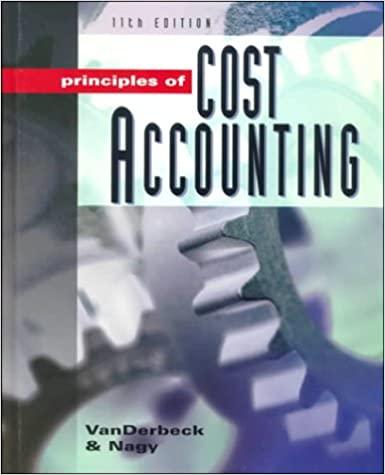Answered step by step
Verified Expert Solution
Question
1 Approved Answer
In 1 9 9 1 , Robert Castello, the CEO of CBI, sold 4 8 % of CBI's shares to the Trust Company of the
In Robert Castello, the CEO of CBI, sold of CBI's shares to the Trust Company of the West TCW The purchase agreement granted TCW the right to appoint members to CBI's board of directors and the right to take control of CBI. Castello instructed some of his subordinates to report inaccurate financial results for the years ending on April and CBI had significant debts to its suppliers, and by the end of and CBI reduced its debts to its major vendors by millions of dollars.
For the audit of CBI in and Ernst & Young's assignment team prepared a document titled "Audit Approach Plan Update and Approval Form." This document identified accounts payable as a "highrisk" audit area. The main audit procedures for accounts payable were:
a Conduct a search for unrecorded liabilities from April to the end of fieldwork.
b Obtain copies of the April vendor reports for CBI's top five vendors and reconcile them with the accounts payable balances for these vendors as recorded in CBI's books. The audit program included the same procedures for an additional of CBI's top vendors.
During the audit, several expenditures made by CBI were identified as potential unpaid liabilities as of April These expenditures were recorded as advances by the company. CBI explained that when they reached the credit limit with major vendors, orders could be withheld until they received advances. After reviewing supporting documents for the advance explanation, E&Y accepted the explanation and did not treat it as an unrecorded liability. Shortly after the issuance of an unqualified opinion by E&Y CBI went bankrupt. In the subsequent legal proceedings, a federal judge indicated that the auditors had failed to thoroughly investigate the alleged advances and consider the client's truthfulness regarding the matter.
For example, auditors did not investigate the "credit limit feature of the explanation. The auditors were negligent in determining the credit limits set by specific vendors for CBI. The auditors did not make an effort to analyze these payable accounts and confirm them directly to determine if the advances applied to specific invoice amounts, especially invoices for purchases made on or before April The explanation of advances recorded in the auditor's work papers, although correct, did not inform the auditors of crucial facts about whether the goods paid for with the advances had been received before or after April As a result, the auditors failed to compel CBI to make appropriate adjustments for approximately $ million in yearend liabilities intentionally overlooked by management. The audit program also failed to identify yearend liability balances that should have been recorded by the company, as the auditors only applied reconciliation procedures to of CBI's largest vendors. However, in one of the vendors, Burroughs Wellcome, the reconciliation revealed an advance payment of $ million given to the vendor in May actually intended for inventory purchases made two weeks before April This finding clearly indicated that the $ million was an unrecorded liability at yearend.
Questions:
Under what general conditions should an audit firm choose to accept a highrisk assignment?
In general, what is the main objective of auditors in auditing a client's accounts payable?
Are you confident that the two primary audit tests applied to CBI's accounts payable would achieve these objectives if correctly applied? Provide reasons.
What ethical principles should be derived from the case?
Step by Step Solution
There are 3 Steps involved in it
Step: 1

Get Instant Access to Expert-Tailored Solutions
See step-by-step solutions with expert insights and AI powered tools for academic success
Step: 2

Step: 3

Ace Your Homework with AI
Get the answers you need in no time with our AI-driven, step-by-step assistance
Get Started


